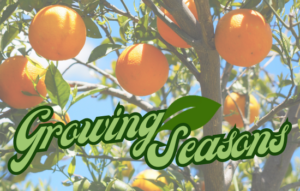
If you have ever grown anything, you know gardens, flowers, and fruit trees have a growing season. The seasons could be short, like those of a garden or flowers, or long, like those of fruit trees. Depending on what those seasons are, we can help or hinder the growth process based on our actions during the process. Growth seasons can often be subject to additional stress and pressures from a dry summer or a cold snap in the early spring, which can devastate the plants. Sometimes, it could cause them not to be around during the harvest period of their life cycle.
Fruit trees have a long growing season/life cycle. While being affected by dry summer or cold snaps in the spring might hurt a season, they are usually much tougher to survive these conditions, especially with a good start. Getting a good start is the key to building up resistance to the stressors during the growing season.
When looking at fruit trees, being able to handle those tough conditions may retard the growth but won’t stop it. They could have a terrible year, but with a little continued attention through that season, they will continue to grow, and when conditions improve, they flourish.
When we first plant, a lot of attention is needed; care and watering are required to establish those plant roots so that if the hard times come, the plant can hold out until better conditions come again. There is a reason plant suppliers ship 2 to 5-year-old trees for you to purchase at Lowe’s or Home Depot’s gardening departments. The hard part of starting those plants has already been done by the time you buy. While the shock of being uprooted, transported, and replanted does cause stress on the plant, unless something adverse happens, the plant will rebound and continue to grow for years.
Our retirement savings are a lot like a fruit tree. You start with a tiny seed, and it takes root by building a solid foundation of roots, hopefully at the start of your working career. If you can focus on getting a good start during the first few years of your working career, you will build a good foundation for your retirement to build off of. Once your retirement is well-rooted, it will grow more significantly than your monthly contributions can grow. Using the power of compounding and continuing to “water and fertilize” multiplies our original investment while continuing to add to it. Then, once you get to the harvest season, you have a consistent stream of fruit coming back to you because of the work you have put in on the front side of your working career. Continuing throughout your career to “maintain and water” your retirement savings until your retirement can produce a good quality income harvest.


